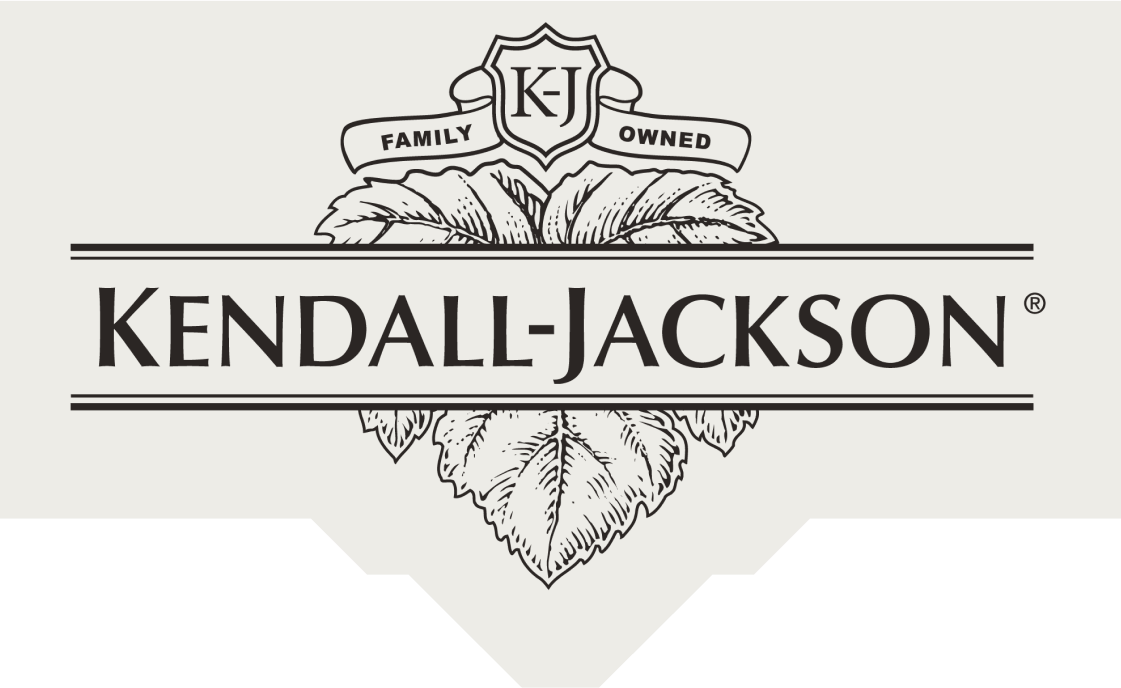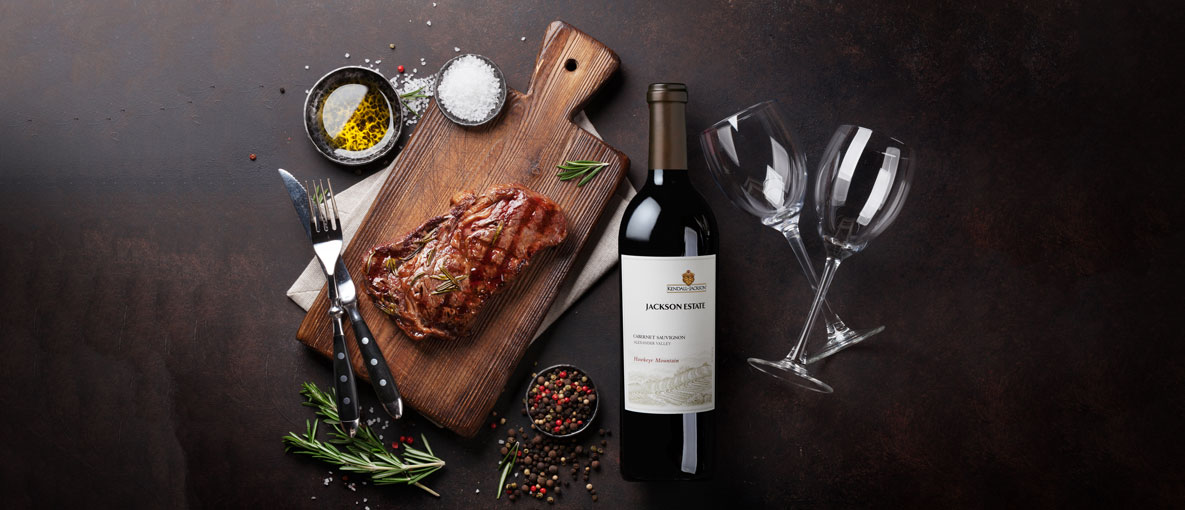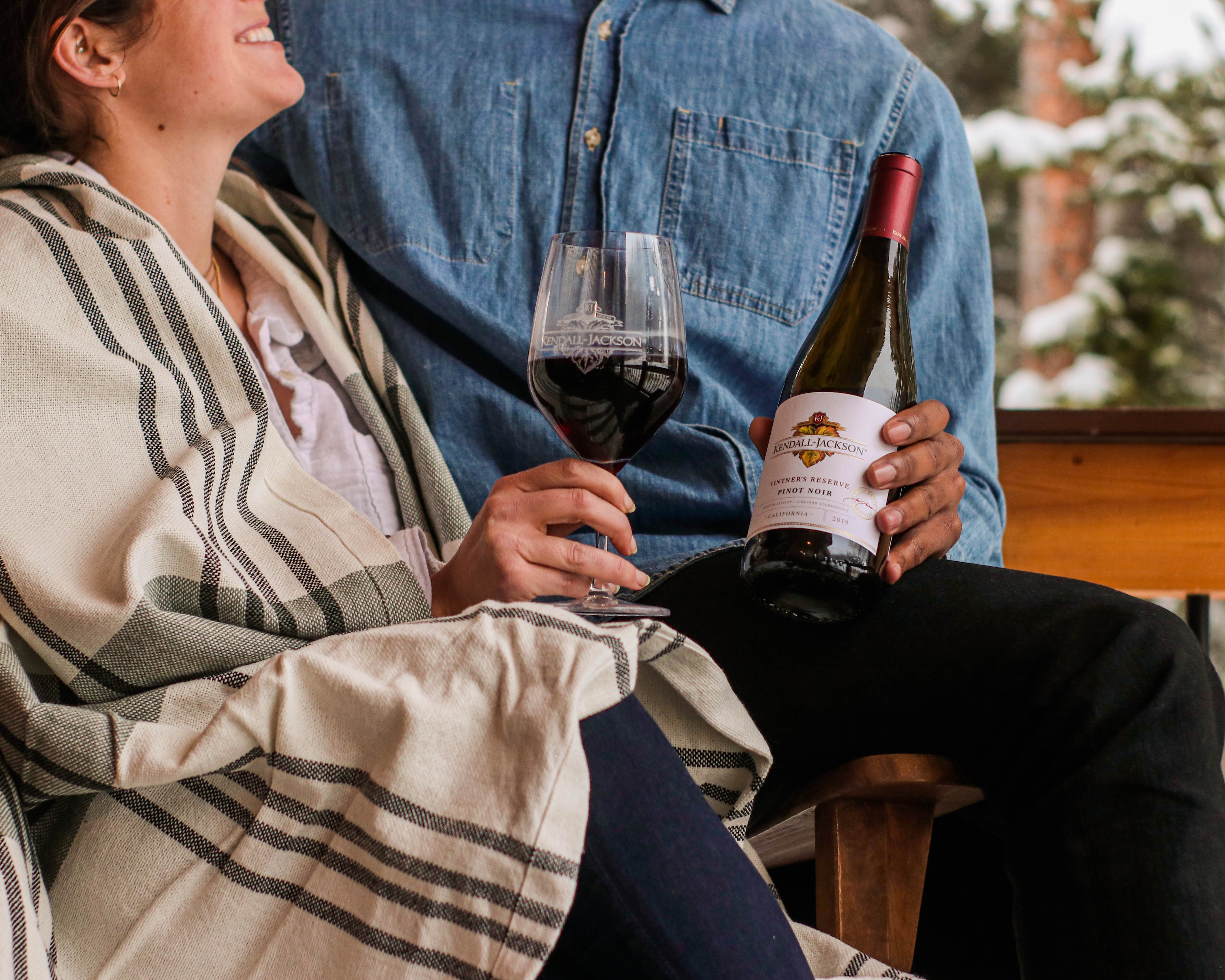What Does a Wine Aerator Do?
What does an aerator do? Let’s start by defining aeration.
The wine industry bible, The Oxford Companion to Wine, defines wine aeration as, “The deliberate and controlled exposure of a substance to air, and particularly to its reactive component, oxygen.”
So, if we get our geek on, a “wine aerator” isn’t the best name for these devices. The aim of tools marketed as wine “aerators” is not to control, but rather to maximize, air and oxygen exposure.
Let’s flip to “decanting” in the same book. “Energetic agitation” is a key phrase. The Oxford Companion to Wine also suggests that decanting might involve ”pouring wine into another vessel from a great height or back and forth into another vessel”. (Hope everyone is wearing black! Sounds splashy!) While wine aerators go against the above, academic definition of “aeration”, they absolutely work toward the benefits provided by decanting wine.
What is a decanter?

The Oxford Companion to Wine also says, “The decanter as we know it today has changed form very little in the last 250 years, in that it is a handleless, clear glass bottle with a capacity of about one liter….” So, gosh, it is certainly seems exciting to welcome some innovation with these wine aerators!
Why do you let wine “breathe”?
The point of aerating wine or, better yet – in my opinion, decanting wine is letting wine “breathe”. Wine is packed with volatile aroma compounds that are released and evolve upon contact with oxygen. When you let a wine breathe, it begins to release those aroma compounds and expands its range of smells. Breathing helps the wine become more interesting, and it can help to harmonize a wine’s structure, particularly its tannins. (The tannins are the elements in wine that provide a drying sensation on the palate.)
What exactly happens to wine when it is exposed to air?
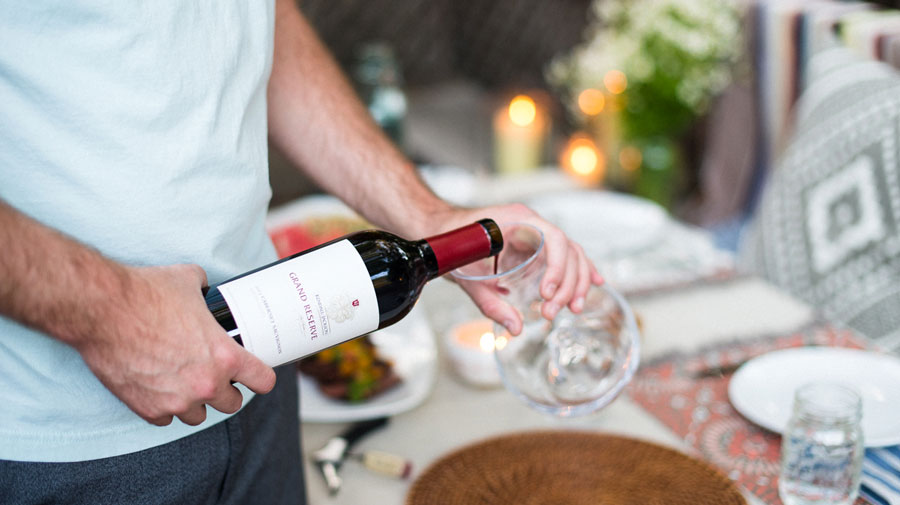
When wine is exposed to air, and more precisely to oxygen, oxidation and evaporation begin. Don’t worry! Don’t race to the bottom of your wine glass. Evaporation occurs over long periods of time and is mostly a concern for winemakers in their cellars as the wines age – mostly for more serious types of wine aged in barrels. Your 750 ml bottle certainly won’t reduce to even 749 ml while you’re enjoying it over the course of dinner!
Oxidation might sound negative. After all, it is the browning effect you see on sliced apples. To use a word from the eighties, it looks “gross.” However, oxidation in moderation is usually a positive thing when you are trying to aerate a wine or let a wine breathe.
The only time to tiptoe around oxidation is with an older wine… that is, decades old wine. Very old wines’ aroma compounds tend to be more delicate and are inherently further developed by bottle aging. Intense aeration or decanting of old wines can make their aromas alter too quickly and vanish right out of the glass. Otherwise, just about all wines benefit from oxygenation, even white wines!
How does a wine aerator compare to a wine decanter?
My conclusion is that there is nothing as effective using a wine decanter and sufficient time to positively aerate a wine. The only exception to this is the WinePrO2, listed at the bottom of this article.
Keep in mind that a decanter does not have to be fancy. You can use a water pitcher! You can also “decant” a wine directly into a few wine glasses.
After testing ten aerators with two or more different wine styles (eight were tested with the same, young USA Cabernet Sauvignon and Italian Chianti Classico), it is clear that each aerator has a different levels of effectiveness. Moreover, the changes provided by the wine aerators can be brief or lasting.
There is a clear split in aerator effectiveness that largely hinges on price. The higher end aerators can change the aromas and textures of wines and those effects last, just as they do when decanting wine with time to spare. The less expensive aerators generally only offer brief aromatic changes when a wine is first poured, and they generally do not provide textural changes.
This brings me to an important point. Wine can only absorb certain amounts of oxygen at a given rate. We often treat wine with kid gloves, but wine is hearty – especially the young wines we most often drink. That’s why the best ones can age well and the less good ones can hang on longer than perhaps they should. The amount of oxygen in those aged bottles of wine and the rate at which they absorb it is scientifically defined. Laboratories can predict the shelf lives of wine. Winemakers choose corks based on their oxygen transfer rates so that wines are “scheduled” to age in a certain way as they hit retail shelves.
Sift that science through a wine aerator!
What are the best wine aerators?
With the exception of the Spiegelau vSpin, WakeUp Wine and WinePrO2, these wine aerators are fun to play with but do little-to-nothing to the wines. Sorry to rain on the wine aerator parade! You just can’t “breathe” any life into them. (Sorry, bad wine joke.)
Basically, you can’t cheat time, and time is what fine wine needs to evolve to benefit. Moreover, so many wines today are made to drink shortly after purchase – because that is how our drinking culture, living situations and viticulture and winemaking have evolved. It’s not shameful that plenty of wine doesn’t need a lot of aeration or other manipulation.
Moreover, not all of the effects are pleasant. One of the reasons to drink a young, fruit-forward USA Cabernet Sauvignon is to appreciate its heft and masses of fresh and pleasantly ripe fruit. Even if only temporary, all of the aerators tamped down the Cabernet’s lush fruit. If you prefer that, maybe you would rather drink a European Cabernet Sauvignon or a less generously fruit-driven wine?
Also, the simpler (and generally less expensive) the wine is, the less effect – much less a positive effect – aeration will have on the wine. These aerators try to “advance” a wine in its age, and that means making the fruit characters taste less fruity.
So, if your average price per bottle of wine is $15 and under, it is absolutely, definitively not worth buying an aerator that costs just as much. Unless you like playing with gadgets, of course!
Aerators Trialed:
Giovanni Collection CorkPops Vinoair Wine Aerator
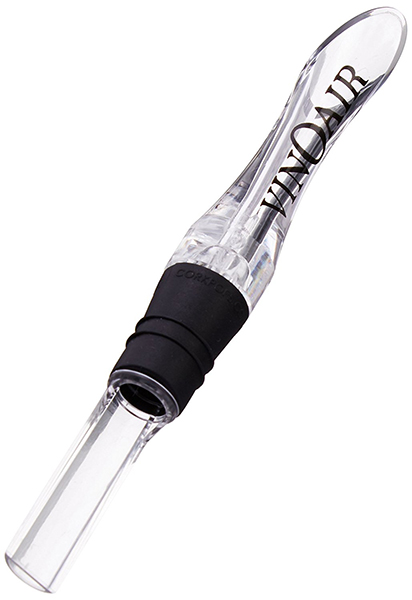
An über-value option, it was pretty hard to see any changes in the wine. Within five minutes, the wine was exactly the same as the wine I had poured into a separate glass five minutes earlier.
Wine Twister
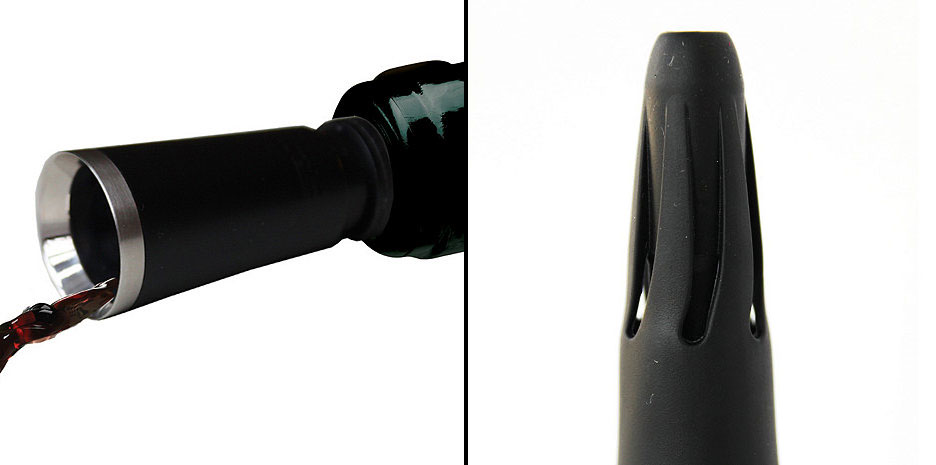
There was not a clear, immediate effect with this wine, so I was close to astonished to see that there was an evident smoothness to the tannins of the Cabernet Sauvignon after about 30 minutes. However, I didn’t notice any change in the Chianti Classico tannins. Separately, it’s a handy-dandy as it doubles as a wine stopper.
Tribella
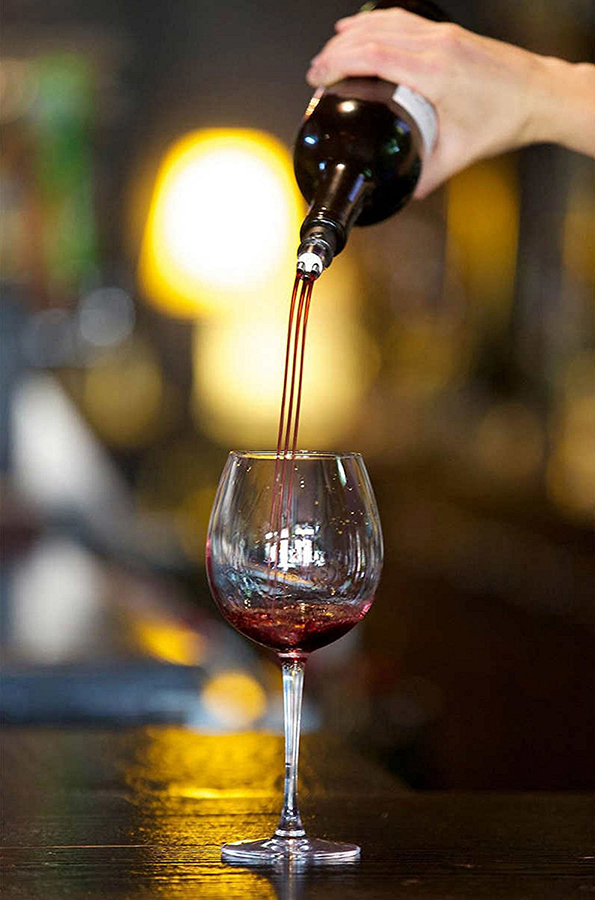
This is effectively an olive oil pourer with three spouts. It does ZERO for wine aeration.
- After an hour, the Giovanni Collection CorkPops Vinoair, Wine Twister and Tribella all tasted exactly alike in the glass and exactly like a freshly poured sample from the same bottle.
Vintorio
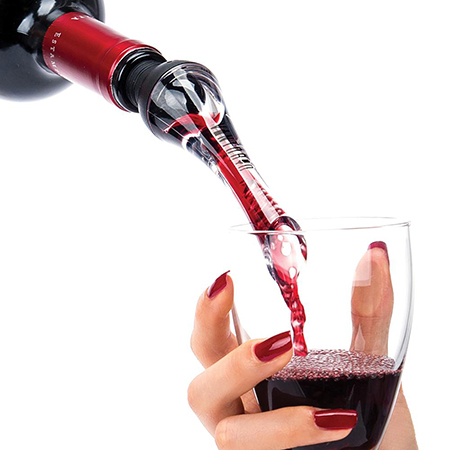
This wine aerator had little affect on the aromas on either wine, but it definitely softened up the palate and softened it up the most. (Again, I can’t explain this clinically, but the wines were definitively different on the palate for a good 70 minutes after they were aerated.) As a side point, I liked that this aerator could be disassembled for thorough cleaning.
Rabbit Super Aerator
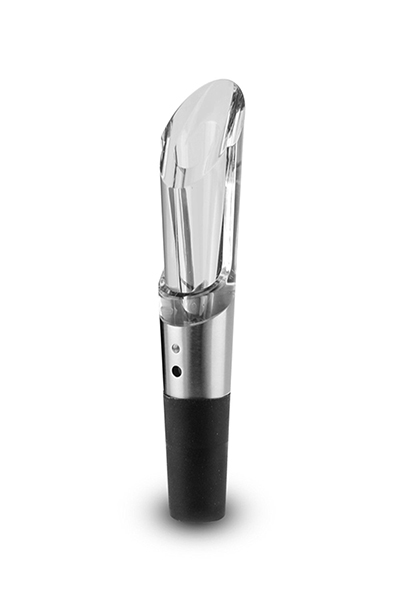
Watch out! This is a very splashy aerator. Immediately after pouring, the wines showed vaguely more berried fruit. With about 45 minutes in the glass, the Cabernet Sauvignon showed kinder, smoother tannins, but the Chianti Classico hadn’t budged.
André Lorent VinLuxe Wine Aerator
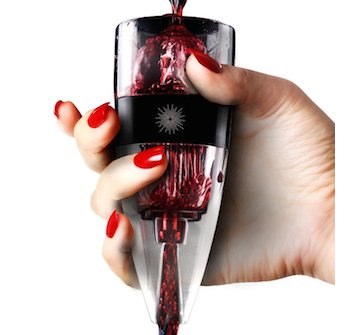
From the perspective of physical aeration, this is the wine aerator that would seem to oxygenate wine the most, given its umbrella at the very top of the funnel. Caution: pour slowly or you’ll spew wine onto the table rather than down the aerator’s gullet. Yet again, the structure aspect was the winner, especially as time wore on as the wine sat in the glass. There was effectively zero aromatic difference. Moreover, the fruit freshness of the two young wines I tasted both seemed to tire after about an hour in the glass.
Vinturi Red Wine Aerator
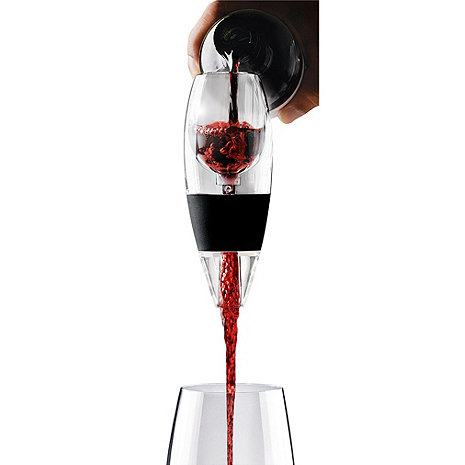
The Vinturi is the standard bearer, as one of the first wine aerators. The splash factor elevates to another level here as wine spit out of the aeration inflow holes! Use over your sink! This is not a cheap toy, and it showed zero difference from the aerated sample to the freshly-poured-from-the-bottle sample. After just over an hour, the Cabernet Sauvignon aromas started to diminish. As there was no effect, much less a marked effect, upon initial aeration, I was stunned to see the aerated wine change dramatically later on. For reference, I had about 1.5 ounces left in the glasses, so these young wines should have been able to carry their aromas in my tasting glass (the ones I used on the Master of Wine exam).
Spiegelau vSpin and Wake Up Wine
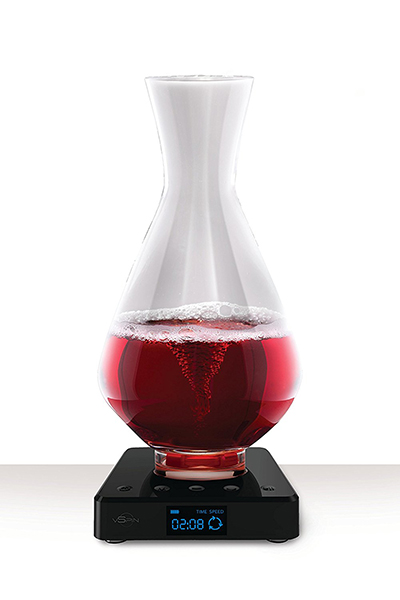
The Spiegelau vSpin and Wake Up Wine take us into the big leagues of wine aeration. These very expensive contraptions ($199 to $250) are honest decanters (you can use the decanter without the spinning base) to start with (a big positive regarding utility). The spinning technology runs a LOT of oxygen through any wine you dump into the decanter. The trick is that, as mentioned above, it isn’t necessarily beneficial to the wine. Yes, it changes the wine, but it’s not to the positive, at least not with the wines I tasted.
WinePrO2
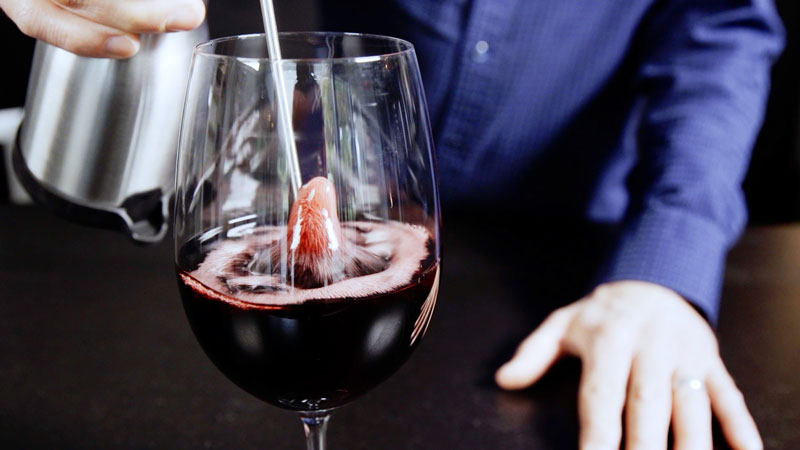
Last and certainly not least is the WinePrO2, described as a "Proactive Decanter". It technically is neither an aerator nor a decanter. It uses 100% oxygen, not air, which has only 21% oxygen. It also uses your wine glass as a decanter. Perhaps its best description would be "oxygenator"?
Semantics aside, the WinePrO2 works, and it works to the wine's benefit. It is also incredibly easy and quick to use. You insert the wand attached to the decanting cartridge into a glass of wine and give the unit's lever a 1/4-second squeeze. The wine bubbles up briefly as the oxygen integrates into the wine. As the device's documentation rightly mentions, note that more O2 is not necessarily better. With a 1/4-second squeeze, the results are more fruit-driven aromatics and smoother textures on all wines.
This is pricey, with a $129 price tag (which includes the device, a decanting cartridge and a preservation cartridge) and $11 refill cartridges. However, each decanting cartridge can decant at least an entire 12-bottle case of wine. Plus, there are two additional benefits to the WinePrO2. First, because you are aerating wine when it is already in a glass, you don't have to open a bottle sealed with a cork. You would use a Coravin to access a single glass then aerate only that glass with the WinePrO2. It's a wine drinker's dream! Second, if you do open the bottle, the WinePrO2 preservation cartridge filled with argon can save up to 60 bottles of unfinished wine.
The Final Drop
Do yourself a favor: don’t buy wine aerators, unless you're splurging on a WinePrO2. They’re great party gadgets, but the vast majority make no difference in wine aroma after a few minutes of the wine sitting in the glass. They make mightily little difference in wine texture, too. I split hairs over hours to figure this out so that you don’t have to. I'll continue to test items that come my way and keep you informed of any exciting, new developments!
Christy Canterbury is a Master of Wine, journalist, speaker and judge based in New York City. In 2014, she was short-listed for the Roederer Online Wine Communicator of the Year Award. Her work has been published in Decanter, Wine Enthusiast, Edible Green Mountains, Wine Searcher, Food Arts, Snooth, Beverage Media, TimAtkin.com, Civiltà del Bere, Wine Business Monthly, TASTED, Selectus Wines and in other outlets.
